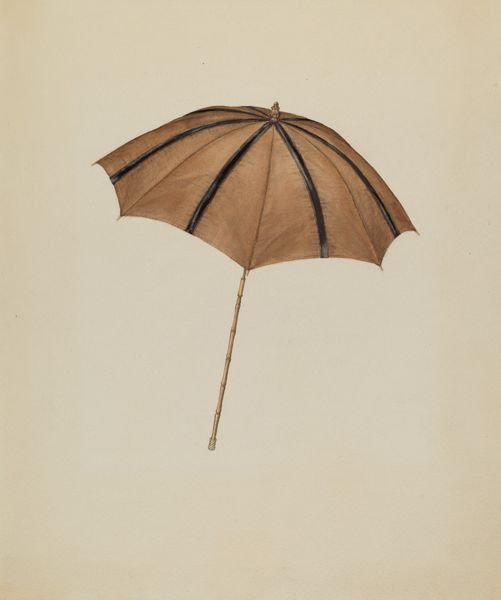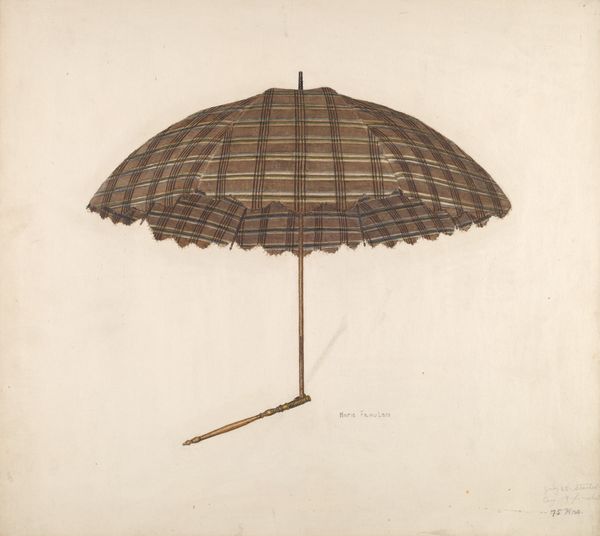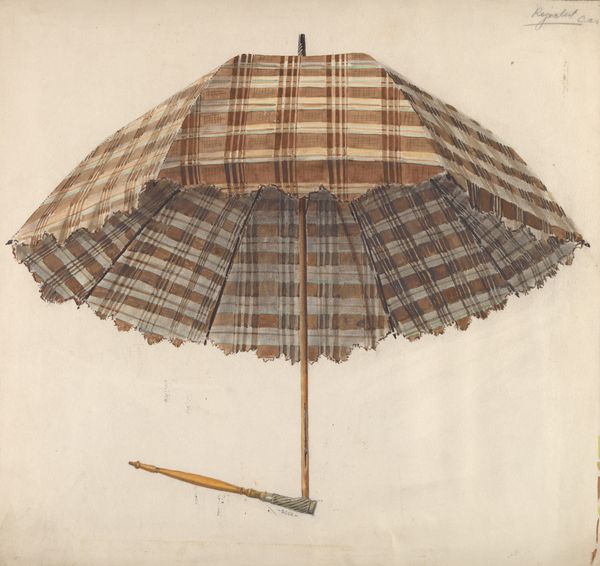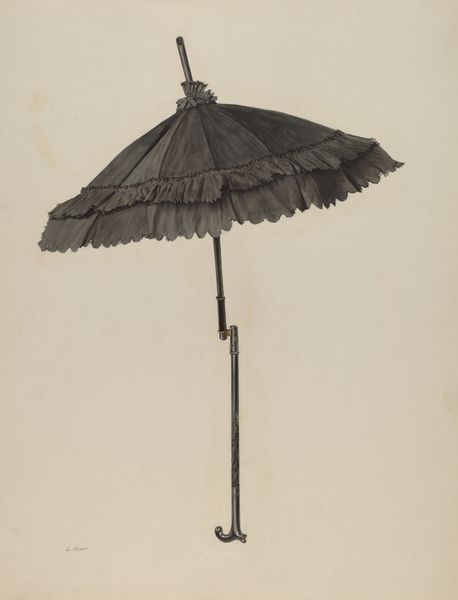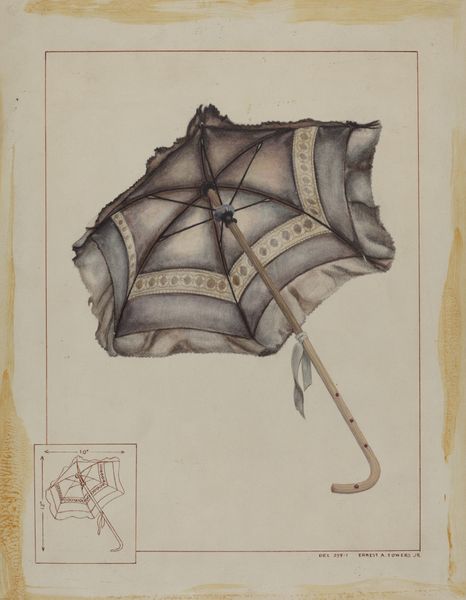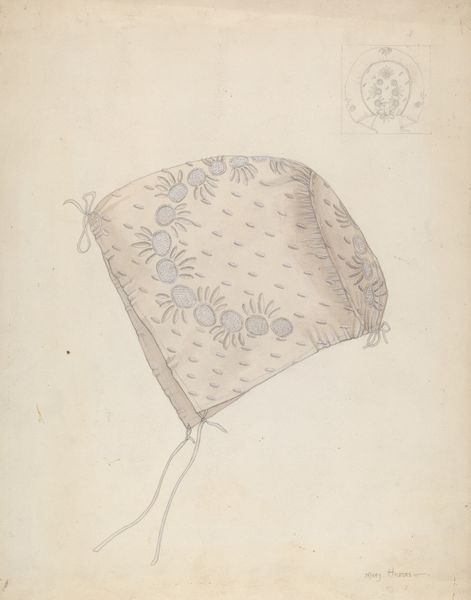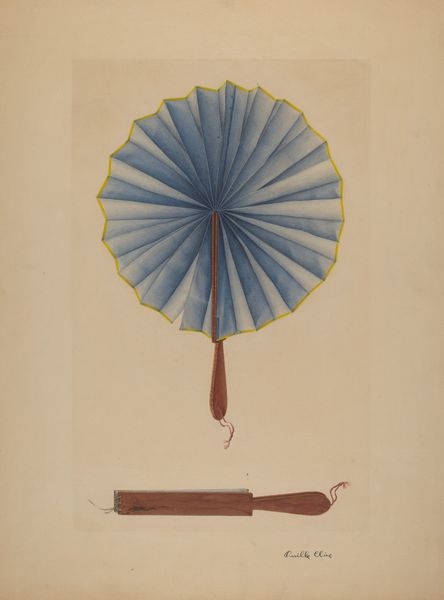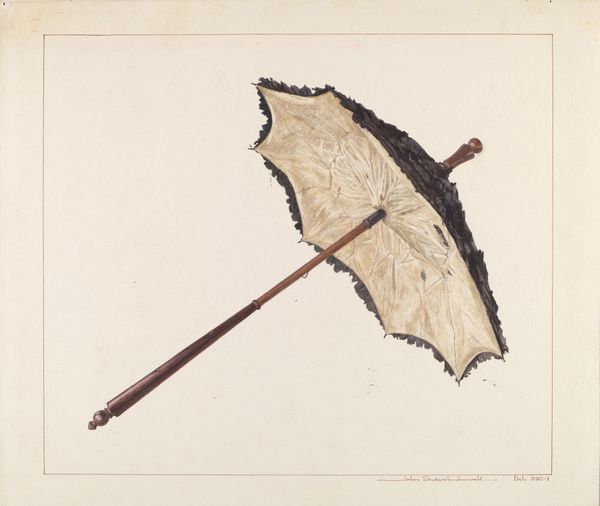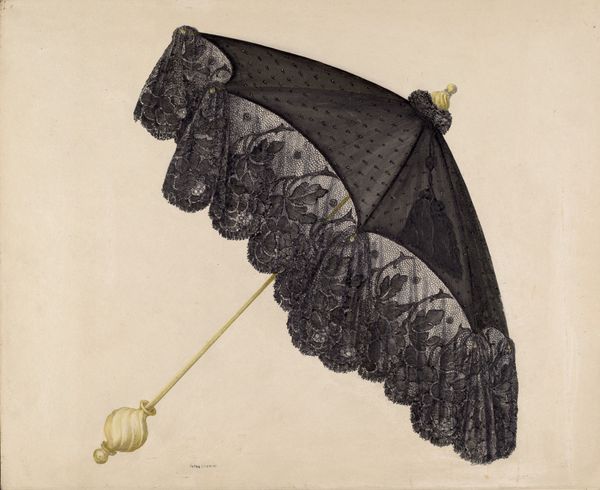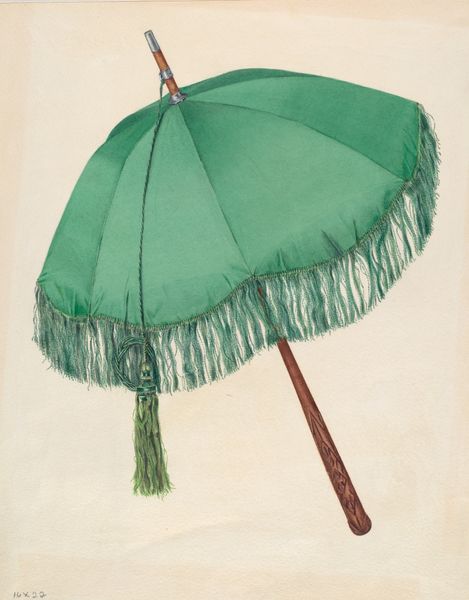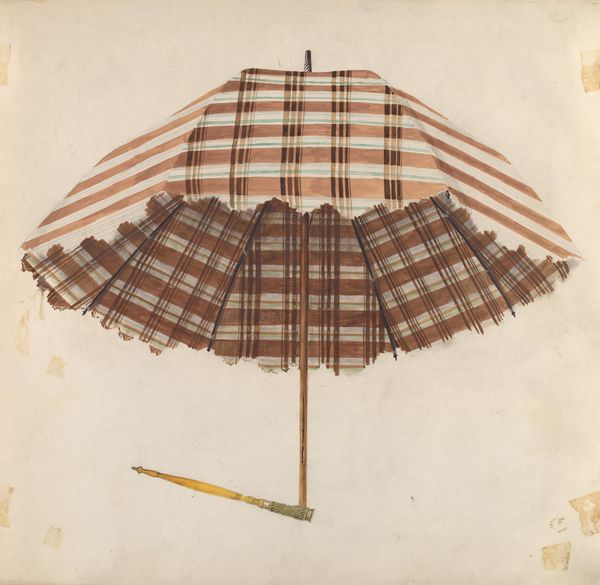
Dimensions: overall: 46.2 x 39.1 cm (18 3/16 x 15 3/8 in.)
Copyright: National Gallery of Art: CC0 1.0
Curator: Here we have J.J. O'Neill's "Parasol," created in 1938, a piece rendered with watercolor and colored pencil on paper. Editor: It feels remarkably delicate, almost ethereal, given its mundane subject matter. There’s something almost ghostly about the translucent quality of the umbrella against the stark background. Curator: The composition certainly emphasizes the formal aspects. Notice the subtle gradation of color across the canopy, achieved through delicate watercolor washes. The plaid pattern, while simple, adds a layer of visual complexity and invites close inspection of line and form. Editor: Yet, can we ignore that an object like a parasol signifies more than mere form? In 1938, class and status were intricately linked to accessories. A parasol was not merely functional; it suggested a certain leisure, a life shielded from harsh labor and exposure, a symbol deeply intertwined with the privileges of white womanhood. Curator: Precisely, and the application of the plein-air technique infuses the piece with an interesting dynamic, capturing the immediacy of light and shadow. O'Neill's dedication to capturing atmospheric conditions contributes to the image’s sense of realism. Editor: But whose reality? "Realism" often masks underlying power dynamics. I am intrigued by the very deliberate absence here. Where is the woman who would hold this parasol? Is O'Neill implying her erasure or displacement perhaps reflecting the tumultuous pre-war period? Curator: That's an interesting reading, given O'Neill's technique here seems largely concerned with capturing objective qualities through rendering light and shade, we cannot ignore his skillful use of colored pencil to render tactile surfaces which enhances our visual experience of texture, of form. Editor: Perhaps this exploration is the very crux, questioning who and what gets depicted in a society on the precipice of conflict. So, it's not *just* an umbrella, is it? It's a statement. Curator: A potent reminder, then, that art operates on multiple planes—its formal elements are undeniably present but may belie historical truths or prompt difficult yet essential conversations. Editor: Precisely. I'll leave our listeners with the notion that the image, however serene on the surface, invites deeper investigation beyond pure aesthetics.
Comments
No comments
Be the first to comment and join the conversation on the ultimate creative platform.
